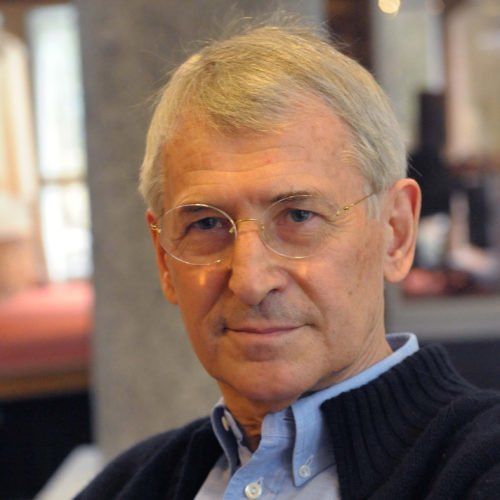Transcending the Victim Mentality
Life is full of surprises, and sometimes things happen that leave us feeling victimised or wronged. While it is normal to experience fleeting feelings of victimisation, for some people, it can become a constant part of their lives. However, a victim mentality is not a life sentence, and it is possible to overcome it.
People prone to feelings of victimisation tend to have low self-esteem, feel pessimistic about life and suffer from feelings of guilt, shame, blame and self-pity. Often, they feel alienated and disillusioned with the world, believing that everyone is out to get them. They often perceive that harm inflicted on them is undeserved and unjustified.
Some of these individuals tend to catastrophise situations, which can lead to aggression or violence directed at their perceived perpetrators. They may justify their immoral actions as punishment for harm done to them or rationalise it by saying that it is to prevent a similar situation from happening again.
They avoid taking responsibility for their destructive impulses and employ defence mechanisms such as denial, projection and splitting. Whatever wrongs they are enacting, they believe they are not to blame. Preoccupied with their own feelings of being wronged, they seek recognition for their suffering and wish for perpetrators to express feelings of shame and guilt for their wrongdoing.
People with a victim mentality tend to ruminate on their imagined miserable state, which interferes with their ability to engage in daily tasks and their relationships with others. They become stuck in negative patterns, preventing them from finding new ways of thinking.
Individuals greatly reduce their power to develop and to grow when they do not accept personal responsibility for their circumstances. By continuing to play the victim role, this attitude to life will become a self-fulfilling prophecy. Wouldn’t it be much more constructive to build on these traumatic experiences to become a better person and create a more positive and hopeful attitude to life?
Read more: 5 Ways to Improve Your Positive Attitude and Good Management
Explore the origins of limiting beliefs
The first step in changing the perception of “self as victim” is for individuals to recognise how they are self-sabotaging and making themselves miserable. From there, they may discover that they have the power to choose their responses, act on their problems and cease being a victim. By paying attention to what is going on in their mind – and how their thoughts affect the stories they tell themselves – they will be able to adjust their behaviour.
To do this, they need to uncover the origins of their self-limiting beliefs and explore repressed memories to understand where certain behavioural characteristics come from. Through this process, they may discover that coping mechanisms they once used have become dysfunctional and are no longer helpful.
Step by step, they can begin to learn how to create another reality by focusing on what they can control and letting go of what they cannot. Once they have replaced their negative thoughts with a different outlook, life may start working in their favour.
Forgive and show compassion
Forgiveness is an essential step in the process of letting go and finding inner peace. However, forgiveness does not exonerate whatever the perpetrators have done. It does not mean forgetting.
Forgiveness is a courageous act that gives individuals the strength to move beyond the pain they have experienced. Sadly, many people hold on to bitterness or resentment under the false belief that it will force others to change. They want others to accept blame or take responsibility for their pain. Instead, they need to accept that they may also have hurt someone, and that forgiveness is a part of life.
Showing compassion towards others can also be a liberating and healing force. Holding on to negative emotions associated with victimhood will only keep people captive and reassert their identity as victims. Being kind to others empowers the self and creates feelings of having greater control over life. As counterintuitive as it may sound, the more individuals feel deprived, the more they need to give.
Adopt an attitude of gratitude
All too often, people get stuck in a trail of negative thoughts and feelings of self-pity. Focusing on the blessings in their life and practicing gratitude can help them develop a much more positive mindset. The quickest way to stop feeling like a victim is to focus on the good that is happening.
To change their outlook, they should make a habit of asking themselves, “What am I grateful for today?” or “What good things have happened in my life today?” Gratitude is simply the conscious acknowledgment of what brings joy in the present moment. By looking at the bigger picture, they may begin to realise how lucky they truly are.
Read more: Gratitude and Recognition in the Workplace
Collective trauma: Moving beyond denial
It is not just individuals who can develop a victim mentality; groups of people can also fall into this mindset. Collective victimhood occurs when groups of people experience disturbing traumatic events or injustices. For instance, members of a population could develop a sense of victimhood if they are prevented from fulfilling their basic needs or have suffered great loss in a war. In some cases, victimhood can even be passed down from generation to generation.
When it comes to collective experiences of victimisation, psychological healing cannot be fully achieved by dealing with it on an individual basis. The denial of past injustices and the harm that has been inflicted is not the answer.
People need to come to terms with what has happened in the past and ensure a culture of remembrance. Mourning is integral to the process of remembrance, allowing people to confront the wounds of the past, metabolise what happened and arrive at new beginnings. If traumatic experiences are not addressed, it will be very hard to reach any form of resolution.
Trauma not only isolates, but also shames and stigmatises. Therefore, for a society to function in the future, it is essential to recreate a sense of community. If the survivors of an atrocity are to restore their belief in humanity, their connections with the larger community must be rebuilt. By creating the feeling of belonging within a group, individuals will be able to restore their trust in humanity. Embarking on this process of reconciliation is the only way to make it happen.
Reconciliation to repair fractured relationships
Reconciliation is the process of restoring relationships by addressing feelings of grief, pain and anger. It involves acknowledging past suffering, changing destructive attitudes and behaviours and providing a platform for healing. Both parties must be willing to face the true ugliness of what has happened and understand why it occurred. The injured party needs to feel reasonably safe that the hurtful behaviour will not occur again.
This can be a lengthy process as both sides need to build trust and a non-violent relationship, as well as learn to live cooperatively. The goal is to establish peace, justice, fairness, healing, forgiveness and productive relationships within and between communities. Reconciliation is distinct from forgiveness, as it is a public process of restoring broken relationships, while forgiveness is a private process of inner healing.
Providing a safe space for survivors to feel heard can facilitate the rebuilding of relationships. Reconciliation requires an examination of the harm done, an investigation of accountability and an understanding of both parties’ narratives. It can build bridges between opposing parties and lead to a collective healing process that includes forgiveness.
To break the cycle of victimhood, people need to embark on two different journeys. The first one is directed inwards towards self-discovery, thus helping them reconcile their personal suffering. The second one applies to mass injustices and is directed outwards, involving reconciliation.
Along these journeys, individuals can shift from being passive victims of their circumstances to active victors capable of effecting meaningful change in their lives.

This article is republished courtesy of INSEAD Knowledge. Copyright INSEAD 2023.
Edited by: Irfan Razali
Personal
Manfred F. R. Kets de Vries is the Distinguished Clinical Professor of Leadership Development & Organisational Change at INSEAD and the Raoul de Vitry d'Avaucourt Chaired Professor of Leadership Development, Emeritus.








